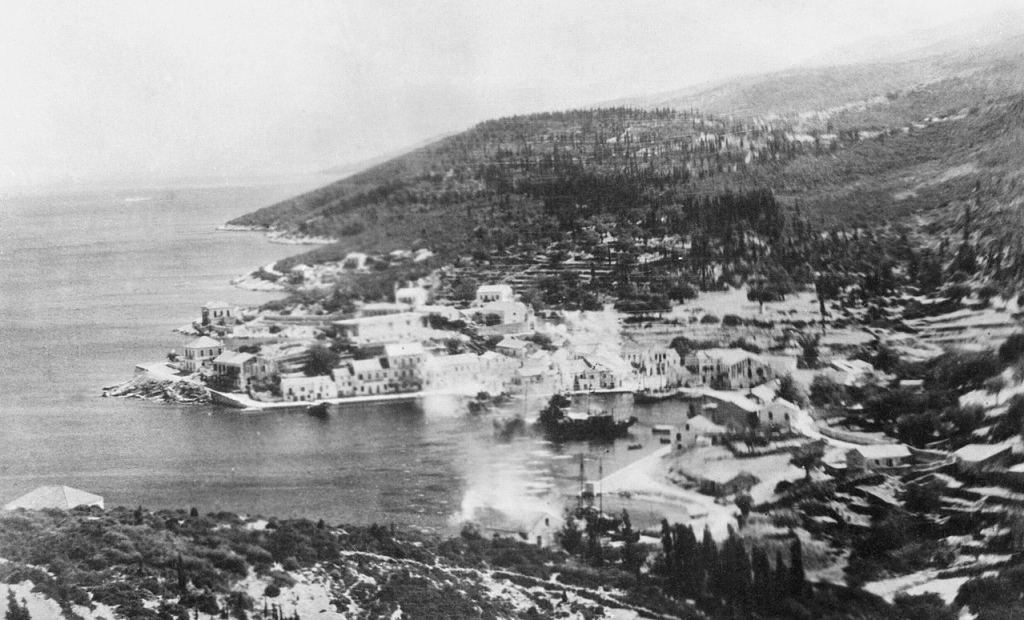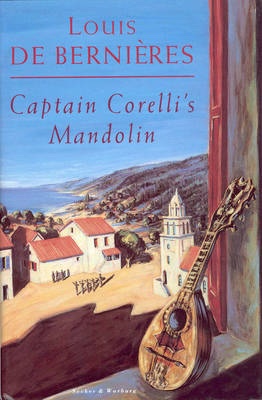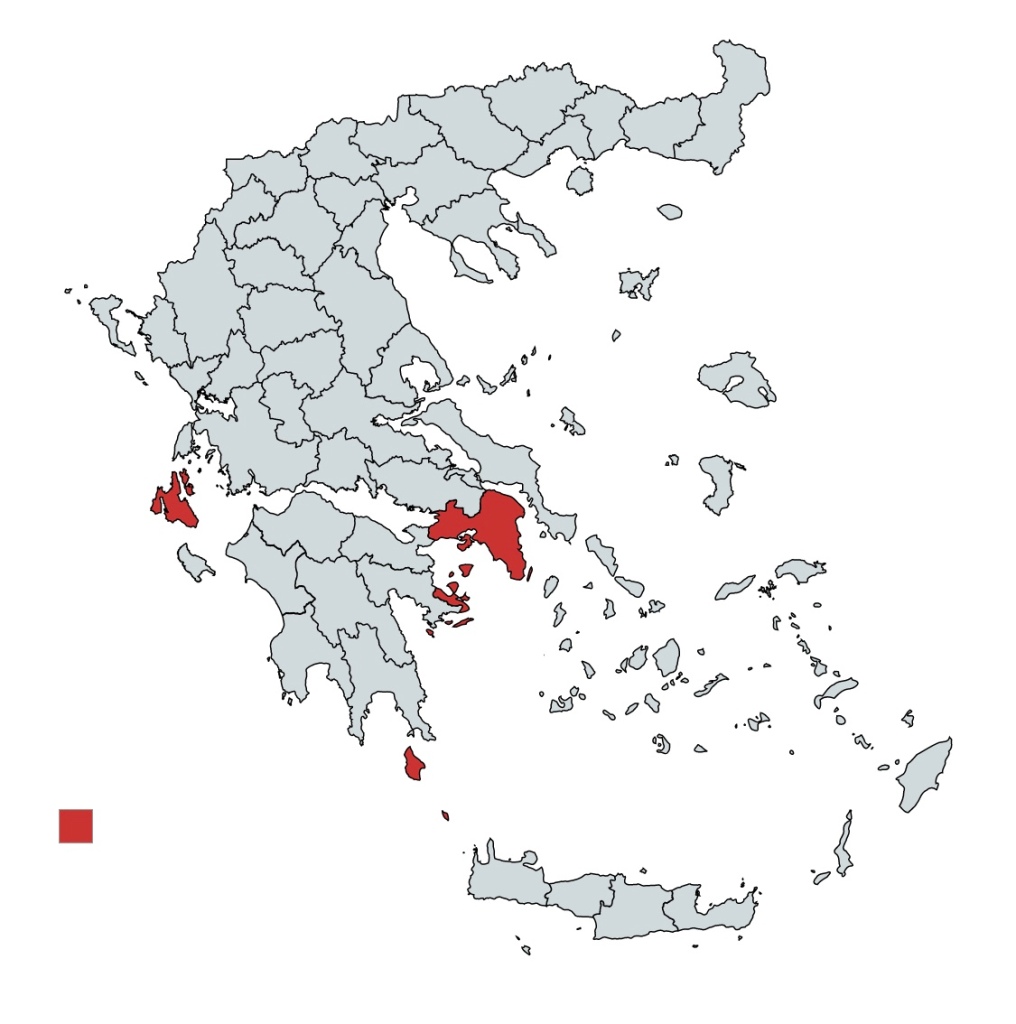
Please note, Cephalonia doesn’t have its own flag. It shares one with all of the Septinsular Republic. So if I manage to complete Corfu, Paxoi, Lefkada, Ithaca, Zante or Kythira in the future I will be using the same flag.
Firstly can I apologise that it has taken so long to get a beer blog out. My mental health has taken a major hit over the course of 2023 & I had lost all motivation to write anything. I’ve had this beer in my possession for around 12 months and have written this blog on and off for about 6 months. I have taken professional help to try & pull me out the rut & I feel that I am on the upward slope now.
Kefalonian & Ithaka – Soira Red ale

My good friend Dave (the same who got me the Serbian Beer), bought me back this from his holiday in the Greek islands. He said it was cheap but could remember the cost. Oh well. It’s a 5.7% beer in a 330ml bottle.

There is a lot going on with this beer that I don’t really understand. It looks like a traditional bitter, however it tastes like a lager & has that clean, fresh mouthfeel. I’m very impressed. Sadly there isn’t a lot of life to the beer. Carbonisation is lacking and this dramatically impacts on head retention. It does however live up to this billing of being a red ale. It has a wonderful cherry glow, which radiates out of the glass. For a brewery on such a small island I am suitably surprised by the standard of this beer.
The brewery is based in Karavomylos. Karavomylos is a village and a community in Sami, on the island of Cephalonia. Its population was 385 in 2011. It is situated on the coast, 2 km west of Sami, 6 km southeast of Agia Effimia and 15 km northeast of Argostoli.
Cephalonia is an island in the Ionian Sea, west of mainland Greece. It’s marked by sandy coves and dry rugged landscapes. Its capital, Argostoli, is built on a hillside overlooking a narrow harbor. Cephalonia’s indented coastline is made up of limestone cliffs, bays and short strips of white sand, like Myrtos Beach in the north. Many beaches are only accessible on foot or via narrow twisting roads. In the late Roman Empire, Cephalonia was part of the Roman province of Achaea. Ecclesiastically it was a suffragan of the Metropolis of Nicopolis (the eparchy of Epirus I). The four ancient cities of the island survived into late antiquity, with Sami probably as the island’s capital. Following the loss of the bulk of Italy, and the expansion of the Muslims into the Western Mediterranean, the island became a strategically important base of operations for the Byzantine Empire in the area, blocking Muslim raids into the Adriatic and serving as a bridge for expeditions in Italy. The loss of Byzantine Italy in 1071 diminished Cephalonia’s importance, and its administration passed from a military strategos to a civilian judge. Its main city was besieged by the Italo-Normans in 1085, and the Venetians plundered the island in 1126. Kefalonia was captured during the Third Norman invasion of the Balkans in 1185, and it became part of the County palatine of Cephalonia and Zakynthos under the Kingdom of Sicily and Venetian suzerainty, until its last Count Leonardo III Tocco was defeated and the island conquered by the Ottoman Empire in 1479. Turkish rule lasted only until 1500, when Cephalonia was captured by a Spanish-Venetian army, a rare Venetian success in the Second Ottoman–Venetian War. From then on Cephalonia and Ithaca remained part of the Stato da Mar of the Venetian Republic until its very end, following the fate of the Ionian islands, completed by the capture of Lefkas from the Turks in 1684. The Treaty of Campoformio dismantling the Venetian Republic awarded the Ionian Islands to France, a French expeditionary force with boats captured in Venice taking control of the islands in June 1797. In 1809, the British established a blockade on the Ionian Islands as part of their conflict with France, and in September of that year they hoisted the Union Flag above the castle of Zakynthos. Cephalonia and Ithaca soon surrendered, and the British installed provisional governments. The treaty of Paris in 1815 recognised the United States of the Ionian Islands and decreed that it become a British protectorate. Colonel Charles Philippe de Bosset became provisional governor between 1810 and 1814. During this period he was credited with achieving many public works, including the Drapano Bridge. In World War II, the island was occupied by Axis forces. Until late 1943, the occupying force was predominantly Italian, the 33rd Infantry Division Acqui plus Navy personnel totalled 12,000 men, but about 2,000 troops from Germany were also present. The island was largely spared the fighting, until the armistice with Italy concluded by the Allies in September 1943. Confusion followed on the island, as the Italians were hoping to return home, but German forces did not want the Italians’ munitions to be used eventually against them; Italian forces were hesitant to turn over weapons for the same reason. As German reinforcements headed to the island the Italians dug in and, eventually, after a referendum among the soldiers as to surrender or battle, they fought against the new German invasion. The fighting came to a head at the siege of Argostoli, where the Italians held out. Ultimately the Germans prevailed, taking full control of the island. Approximately five thousand of the nine thousand surviving Italian soldiers were executed in reprisal by the German forces. The book Captain Corelli’s Mandolin by Louis de Bernières, which was later made into a film, is based on this event. While the war ended in central Europe in 1945, Cephalonia remained in a state of conflict due to the Greek Civil War. Peace returned to Greece and the island in 1949. In late 2006, a Roman grave complex was uncovered as the foundation of a new hotel was being excavated in Fiskardo. The remains date to the period between the 2nd century BC and the 4th century AD. Archaeologists described it as the most important find of its kind in the Ionian Islands. Inside the complex, five burial sites were found, including a large vaulted tomb and a stone coffin, along with gold earrings and rings, gold leaves that may have been attached to ceremonial clothing, glass and ceramic pots, bronze artefacts decorated with masks, a bronze lock and bronze coins. The tomb had escaped the attention of grave robbers and remained undisturbed for thousands of years. When the tomb was opened the stone door easily swung on its stone hinges. A Roman theatre was discovered very near the tomb, so well preserved that the metal joints between the seats were still intact.

Captain Corelli’s Mandolin, released simultaneously in the United States as Corelli’s Mandolin, is a 1994 novel by the British writer Louis de Bernières, set on the Greek island of Cephalonia during the Italian and German occupation of the Second World War. The main characters are Antonio Corelli, an Italian army captain, and Pelagia, the daughter of the local physician, Dr Iannis. An important event in the novel is the massacre of Italian troops by the Germans in September 1943—the Italian Acqui Division had refused to surrender and had fought the Germans for nine days before running out of ammunition. Some 1,500 Italian soldiers died in the fighting; 5,000 were massacred after surrendering, and the rest were shipped to Germany, of whom 3,000 drowned when the ship carrying them hit a mine. Bernières has denied that the character of Corelli is based on Amos Pampaloni who was then an Italian artillery captain in Cephalonia, despite the many similarities in their stories. Pampaloni survived execution, joined the Greek People’s Liberation Army, the Partisans in the Greek civil war, and fought with them in Epirus for fourteen months. Pampaloni was interviewed by The Guardian newspaper in 2000 and expressed the view that the novel misrepresented the Greek partisan movement. The Orlando Sentinel called Corelli’s Mandolina “radically traditionalist” novel, “a good nourishing tale full of true things, historical and psychological, spiced with opinion and contrariness, with not one dollop of regard for artistic fashion.” The novel was adapted as four 45-minute radio plays from 17–20 September 2007 on BBC Radio 4, having been chosen as a popular “Book of the Week” on the same station some years earlier. The episode titles were “A Pea in the Ear,” “Invasion of the Italians,” “Looking for Snails” and “Earthquake.” It was narrated by Tom Goodman-Hill, with Celia Meiras as Pelagia, Stephen Greif as Dr Iannis, Daniel Philpott as Corelli. The mandolin music for it was composed and performed by Alison Stephens, and the production was produced and directed by David Hunter. In 2011, the Mercury Theatre in Colchester, and the Kote Marjanishvili Theatre of Tbilisi, Georgia, produced an adaptation of the novel written by Mike Maran and directed by Levan Tsuladze. This production combined live actors and puppetry. It had its premiere in Georgia at the Tbilisi International Festival in October 2011, before transferring to the Mercury. However the best known adaptation is probably A film version of Captain Corelli’s Mandolin which was released in 2001, with Nicolas Cage as the Italian Captain Corelli, John Hurt as Dr Iannis, and Penélope Cruz as his daughter, Pelagia. The film, directed by John Madden, also starred Christian Bale, Irene Papas and Joanna Daria Adraktas.

The Venetian Castle of Saint George in Cephalonia: The Castle of Saint George is located 7 km southeast of Argostoli, above the village Peratata Cephalonia. It has a polygonal shape and covers an area of 16,000 sq. m. This Castle was originally built in the 12th century by the Byzantines but it was mostly the Venetians who gave it its present form. In fact, its external walls were built in 1504 by the Venetians. The castle is ruined today and only a few buildings survive. It was not only the time and wars that caused its damages. This castle also suffered a lot from the earthquake that hit Cephalonia in 1956. At the time of its glory, inside the Castle, there were residences, public buildings, storehouses with food and guns, churches, hospitals, prisons, cisterns of water and generally an organized town. In fact, this Castle was the capital of Cephalonia before Argostoli was made the new capital in 1757. Close to a small square in the castle, you will also see the ruins of the Catholic Church of Saint Nicholas.

As before when I have started a new map within a country that I have already featured, it is important that I look that that region in more detail too. I give you the Attica Region.

Located on the eastern edge of Central Greece, Attica covers about 3,808 square kilometers. In addition to Athens, it contains within its area the cities of Elefsina, Megara, Laurium, and Marathon, as well as a small part of the Peloponnese peninsula and the islands of Salamis, Aegina, Angistri, Poros, Hydra, Spetses, Kythira, and Antikythera. The region was established in the 1987 administrative reform, and until 2010 it comprised the 4 prefectures of Athens, East Attica, Piraeus and West Attica.
